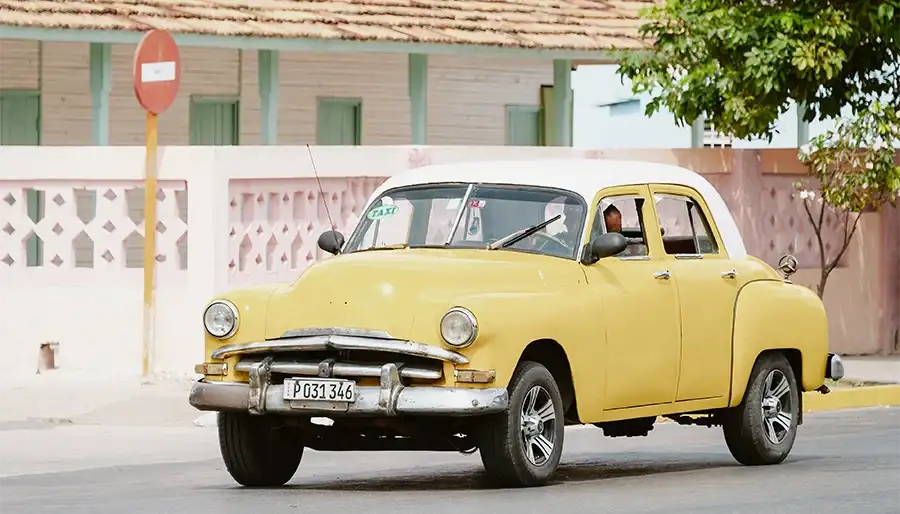
If you're the proud owner of a vintage car in India, you'll want to ensure it's properly registered. The Indian government has introduced new rules to preserve and promote these automotive treasures. Let's explore what you need to know about the vintage car registration process to get the classic car number plates easily.
Vintage vehicles are a testament to the craftsmanship and design of a bygone era. They evoke a sense of nostalgia and turn heads wherever they go. If you own one of these beauties, it's crucial to understand the registration process to keep your car on the road legally.
Key Highlights:
- The Indian government has formalised the vintage car registration process to preserve automotive heritage.
- Vintage vehicles must be over 50 years old and maintained in their original form to qualify for registration.
- Owners need to apply for registration using Form 20 and provide the necessary documents.
- Upon successful registration, vintage cars receive unique classic car number plates.
What Qualifies as a Vintage Vehicle in India?
According to the new rules, a vehicle must be over 50 years old to be considered vintage. It should be maintained in its original form without any substantial overhaul to the engine, chassis, or body. The Vintage Motor Vehicles State or Union Territory Committee will assess the vehicle to ensure it meets these criteria.
It's important to note that vintage vehicles are meant for display and occasional use. They cannot be driven regularly for private or commercial purposes. Owners can, however, take their cars to exhibitions, rallies, and for maintenance or refuelling.
Vintage Car Registration Process
To register your vintage vehicle, you'll need to fill out Form 20 and submit it to your local Regional Transport Office (RTO). The following documents should accompany the application:
- Insurance policy
- Fee
- Bill of Entry (for imported vehicles)
- Old Registration Certificate (if previously registered in India)
The State Registering Authority will then issue a Certificate of Registration as per Form 23A within 60 days. If your vehicle was already registered, you can retain the original registration mark. However, for fresh registrations, a new registration mark will be assigned in the format "XX VA YY*".
- XX stands for the state code
- VA indicates a vintage vehicle
- YY is a two-letter series
- is a four-digit number from 0001 to 9999
The registration fees for vintage vehicles are ₹20,000 for a new registration and ₹5,000 for subsequent re-registration. The registration is valid for 10 years.
Classic Car Number Plates for Vintage Vehicles
Once your vintage car registration is complete, you'll receive unique classic car number plates. These plates feature the "VA" lettering to differentiate them from regular vehicle number plates. The plates should have black lettering on a white background and be displayed in a high-security registration plate (HSRP) format on the front and rear of the vehicle.
If your vintage car was previously registered, you can retain the original number plates. However, you'll need to provide the original registration documents to do so.
Insuring Your Vintage Car
As with any vehicle on Indian roads, vintage cars must have valid insurance. Reliance General Insurance offers
comprehensive car insurance policy tailored for vintage vehicles. Their plans consider factors such as the car's age, value, and potential repair costs to determine premiums.
Some key features of Reliance's vintage car insurance include:
- Coverage for third-party liability and own damage
- Cashless repairs at network garages
- Flexible premium payment options
- 24x7 roadside assistance
Insuring your vintage car not only ensures compliance with the law but also provides financial protection in case of accidents or damage.
Transferring Ownership of a Vintage Car
If you plan to sell your vintage car, both you and the buyer must inform your respective state transport authorities 90 days before the transaction. This allows the RTO to update their records and issue new registration documents to the new owner.
Similarly, if you're purchasing a vintage car, ensure that the seller has completed the necessary paperwork and transferred the registration to your name.
Preserving Automotive Heritage
The new vintage car registration rules in India aim to preserve and celebrate the country's rich automotive heritage. By formalising the registration process and issuing distinctive classic car number plates, the government has taken a step towards recognising the value of these timeless vehicles.
As a vintage car owner, it's essential to follow the registration process diligently. Ensure your vehicle meets the criteria, submit the required documents, and obtain the appropriate insurance coverage. By doing so, you can enjoy your classic ride while complying with the law and contributing to the preservation of automotive history.
Frequently Asked Questions
-
Can I drive my vintage car daily after registration?
No, vintage vehicles are meant for display and occasional use only. They cannot be driven regularly for private or commercial purposes.
-
How long does the vintage vehicle registration process take?
The State Registering Authority will issue a Certificate of Registration within 60 days of receiving your application and required documents.
-
What if my vintage car doesn't meet the original condition criteria?
If your vehicle has undergone substantial modifications to the engine, chassis, or body, it may not qualify for vintage registration. The Vintage Motor Vehicles State or Union Territory Committee will assess the vehicle's eligibility.
-
Can I get insurance for my vintage car?
Yes, insurance is mandatory for all vehicles on Indian roads, including vintage cars. Reliance General Insurance offers comprehensive policies tailored for vintage vehicles, considering factors like age, value, and potential repair costs.
-
What should I do if I want to sell my vintage car?
Both you and the buyer must inform your respective state transport authorities 90 days before the sale. This allows the RTO to transfer the registration to the new owner and update their records accordingly.